The banjo is a stringed instrument with a thin membrane stretched over a frame or cavity to form a resonator. The membrane is typically circular, in modern forms usually made of plastic, originally of animal skin. Early forms of the instrument were fashioned by African Americans and had African antecedents. In the 19th century, interest in the instrument was spread across the United States and United Kingdom by traveling shows of the 19th century minstrel show fad, followed by mass-production and mail-order sales, including instruction method books. The inexpensive or home-made banjo remained part of rural folk culture, but 5-string and 4-string banjos also became popular for home parlour music entertainment, college music clubs, and early 20th century jazz bands. By the early 21st century, the banjo was most frequently associated with folk, bluegrass and country music, but was also used in some rock, pop and even hip-hop music. Among rock bands, the Eagles, Led Zeppelin, and the Grateful Dead have used the five-string banjo in some of their songs.

The double bass, also known simply as the bass, amongst other names, is the largest and, therefore, lowest-pitched chordophone in the modern symphony orchestra. Similar in structure to the cello, it has four, although occasionally five, strings.
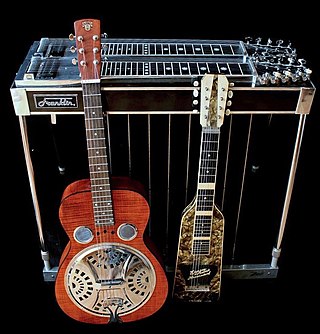
A steel guitar is any guitar played while moving a steel bar or similar hard object against plucked strings. The bar itself is called a "steel" and is the source of the name "steel guitar". The instrument differs from a conventional guitar in that it is played without using frets; conceptually, it is somewhat akin to playing a guitar with one finger. Known for its portamento capabilities, gliding smoothly over every pitch between notes, the instrument can produce a sinuous crying sound and deep vibrato emulating the human singing voice. Typically, the strings are plucked by the fingers of the dominant hand, while the steel tone bar is pressed lightly against the strings and moved by the opposite hand.

William Smith Monroe was an American mandolinist, singer, and songwriter, who created the bluegrass music genre. Because of this, he is often called the "Father of Bluegrass".

Bluegrass music is a genre of American roots music that developed in the 1940s in the Appalachian region of the United States. The genre derives its name from the band Bill Monroe and the Blue Grass Boys. Like mainstream country music, it largely developed out of old-time string music, though in contrast, bluegrass is traditionally played exclusively on acoustic instruments and also has roots in traditional English, Scottish, and Irish ballads and dance tunes as well as in blues and jazz. Bluegrass was further developed by musicians who played with Monroe, including 5-string banjo player Earl Scruggs and guitarist Lester Flatt. Monroe characterized the genre as, "Scottish bagpipes and ole-time fiddlin'." It's a part of Methodist, Holiness and Baptist traditions. It's blues and jazz, and it has a high lonesome sound."
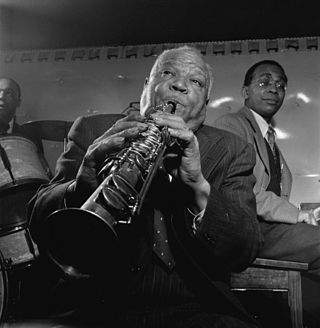
Sidney Joseph Bechet was an American jazz saxophonist, clarinetist, and composer. He was one of the first important soloists in jazz, and first recorded several months before trumpeter Louis Armstrong. His erratic temperament hampered his career, and not until the late 1940s did he earn wide acclaim. Bechet spent much of his later life in France.

Old-time music is a genre of North American folk music. It developed along with various North American folk dances, such as square dancing, clogging, and buck dancing. It is played on acoustic instruments, generally centering on a combination of fiddle and plucked string instruments, most often the banjo, guitar, and mandolin. The genre is considered a precursor to modern country music.

The lap steel guitar, also known as a Hawaiian guitar, is a type of steel guitar without pedals that is typically played with the instrument in a horizontal position across the performer's lap. Unlike the usual manner of playing a traditional acoustic guitar, in which the performer's fingertips press the strings against frets, the pitch of a steel guitar is changed by pressing a polished steel bar against plucked strings. Though the instrument does not have frets, it displays markers that resemble them. Lap steels may differ markedly from one another in external appearance, depending on whether they are acoustic or electric, but in either case, do not have pedals, distinguishing them from pedal steel guitars.

David Anthony Rice, known professionally as Tony Rice, was an American guitarist and bluegrass musician. He was an influential acoustic guitar player in bluegrass, progressive bluegrass, newgrass and acoustic jazz. He was inducted into the International Bluegrass Music Hall of Fame in 2013.
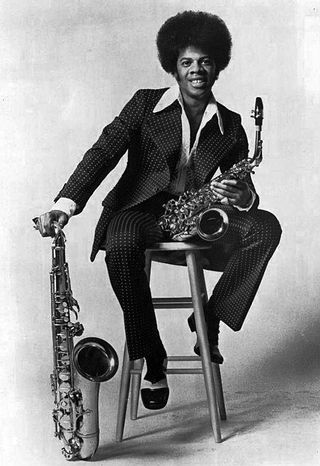
A multi-instrumentalist is a musician who plays two or more musical instruments at a professional level of proficiency.
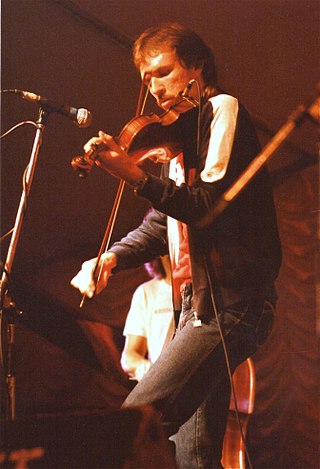
Mark O'Connor is an American fiddle player and composer whose music combines bluegrass, country, jazz and classical. A three-time Grammy Award winner, he has won six Country Music Association Musician Of The Year awards and, was a member of three influential musical ensembles; the David Grisman Quintet, The Dregs, and Strength in Numbers.
The American state of Colorado has many music scenes and venues, especially in the larger cities like Denver and Colorado Springs.
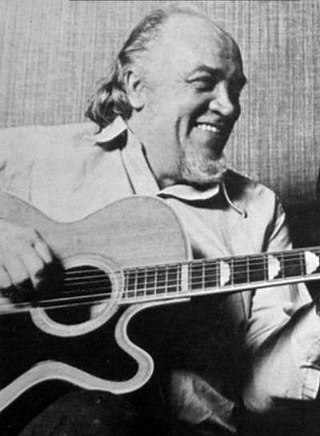
Denys Justin Wright, known professionally as Denny Wright, was a British jazz guitarist.
John Humbird Duffey Jr. was a Washington D.C. based bluegrass musician.
Czech Bluegrass is Czech interpretations of bluegrass music that emerged during the middle of the twentieth century in the southeastern United States.
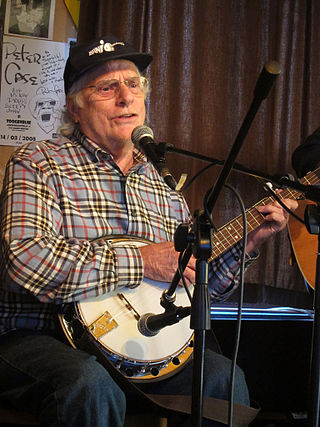
Eddie Adcock is an American banjoist and guitarist.
Benjamin Horace Williams was an American bluegrass musician. A multi-instrumentalist, he sang and played fiddle, guitar, banjo, autoharp, and mandolin.
The European World of Bluegrass is an annual three-day event which was initially held in 1998 in the town of Lichtenvoorde, Netherlands, and is now being held annually in the town of Voorthuizen, Netherlands. This festival is held in May or June, during the “Ascension day”, Christian religious holiday. The festival normally begins on a Thursday and ends the following Saturday night. Every year musicians from countries in Europe and around the world travel to meet and perform. During the festival about 50 bands or 200 musicians perform. Every year the EWOB attracts 500 to 600 visitors.
The following lists events that happened during 2000 in Finland.
David Michael Richey, known professionally as Slim Richey, was an American jazz guitarist, fiddle player, bandleader, and publisher.











